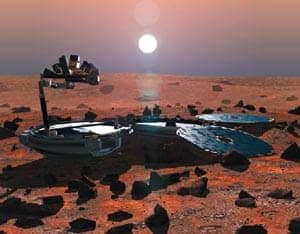It is hard to do science in space. First, your instruments have to survive the launch, assuming that the rocket carrying them takes off successfully. Next, you have to get your equipment into orbit or, even more difficult, onto the surface of the Moon or Mars or wherever. Then your experiment has to work in the harsh environment of space, and, finally, you have to get your data back to Earth. It is not surprising that things occasionally go wrong.

Sometimes the explanations for the failure of a mission are simple and embarrassing, such as confusing metric and imperial units (Mars Climate Orbiter) or inserting sensors upside down (Genesis). Other times the causes are organizational, and the consequences tragic, as was the case with the Columbia Space Shuttle accident. In all cases a panel of experts is appointed to identify the reasons for the failure and make recommendations to prevent the same mistakes being repeated.
Such reports are often eagerly awaited, none more so than that into the loss of the Beagle 2 lander at the end of 2003. The lander, which was the brainchild of Colin Pillinger of the Open University (OU) in the UK, had been developed to search for signs of life on Mars, and it had received unprecedented media coverage for a science project. It was carried to the red planet by Mars Express, a European Space Agency (ESA) mission, and was due to land on Mars on Christmas day. Sadly, it has not been heard from since – although the orbiting Mars Express is currently the source of a steady stream of new results.
Initially, the UK government, which had invested some £25 m in Beagle, and ESA refused to publish the report of a commission of inquiry, arguing that it contained commercially sensitive information, although they did make public the recommendations from the report. However, the full report was finally published last month after New Scientist magazine requested it under the UK’s new Freedom of Information Act. Although the report contains information that is embarrassing for all concerned, it is difficult to understand why anyone would want to keep its contents secret. Last month also saw the publication of responses from the UK government and ESA to an earlier report on Beagle 2 by the science and technology committee of the House of Commons.
The ESA/UK report does not apportion blame for the loss of Beagle, but it does identify a number of “programmatic” errors: the decision to treat Beagle 2 as another scientific instrument as opposed to a spacecraft in its own right; poor management by ESA, the OU and others; and insufficient funding. The commission also identified a number of technical errors, although it is silent on the unhelpful tension that existed between the unashamedly British Beagle team and the space agency.
With the benefit of hindsight, the commission says that ESA should have insisted on full funding for the lander being in place by October 1998. Although the funding failed to materialize, the agency still approved Beagle 2. However, it is easy to imagine the outcry that would have followed any decision by ESA to cancel the project. In its report, the House of Commons committee had called for improvements in “the government’s capacity to respond to major financial commitments at short notice”, but the government’s response to this is luke-warm at best. Mechanisms should certainly be in place to respond rapidly and flexibly to new opportunities, but not at the expense of projects that have already passed through the necessary peer-review channels. It is essential, for instance, that any Beagle 3 mission has to compete with other projects for funding.
There are a number of other lessons for anyone who wants to go into space in the near future. First, university-based teams must concentrate on science and leave the hardware needed for space to the experts. Second, it is not a good idea to rely on the possibility of private support for expensive research projects, no matter how good a salesperson you are.



